According to statistics, 8 out of 10 people suffer from spinal discomfort and pain. Although many do not believe that it is associated with any pathology, they attribute the causes to lifestyle-related concerns.
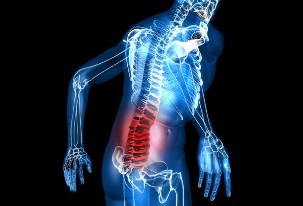
What is osteochondrosis?
Osteochondrosis is a degenerative dystrophic disease with a complex lesion of the spinal cartilage. During development, it can spread to bone cells and tendons. Severe stress on the spine can lead to the development of this disease.
Lumbar osteochondrosis, which occurs in the coccyx, is short-lived and has severe pain.
lumbar osteochondrosis
Lumbosacral osteochondrosis is diagnosed when the intervertebral discs lose elasticity, cartilage is removed and deformed. The ligaments and adjacent vertebrae also undergo deformation over time. Restriction of movement due to pain in the back and legs is considered characteristic.
This type of osteochondrosis often manifests itself in the chest and cervical spine due to the load on the sacrum and waist. Such defects are possible with regular sports activities and congenital specificity.
According to ICD-10, lumbosacral osteochondrosis has codes M42, M91-M93 - connective cell diseases and has the following types:
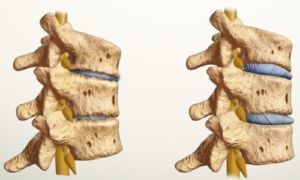 Polysegmentalis a common and dangerous disease, pathological processes occur in different segments and parts of the spine. Lack of treatment therefore causes complications, so you need to diagnose and start treatment on time.
Polysegmentalis a common and dangerous disease, pathological processes occur in different segments and parts of the spine. Lack of treatment therefore causes complications, so you need to diagnose and start treatment on time.- Erosiveis a progressive type of intervertebral disc characterized by severe symptoms. The course of the disease is monitored by CT or radiography. The main criterion is the maintenance of sclerotic ring plates.
- Deformation- means a permanent pathology of the joints, from which a degenerative inflammatory process develops. This process destroys the structure of the joints and causes rapid aging. Excessive exercise is the cause of this pathology, although it may depend on other factors.
Treatment and rehabilitation
Medication
Chondroprotectors in the form of tablets and solutions for injection are mainly used in the treatment of low back pain. Several types of medications are required for positive use. The use of injections occurs in a significantly shorter period of time and is also considered painful due to the fact that an injection is injected directly into the spine.
These drugs also have anti-inflammatory side effects of nausea and rashes.
Non-steroidal anti-inflammatory drugs (NSAIDs) are used in the treatment of lumbar sacral spine, which have anti-inflammatory effects and are indicated for use in chronic forms and acute pain.
Mixed intake of vitamins, chondroprotectors and glucosamine also helps to restore.
Block in Osteochondrosis
In case of severe pain that interferes with normal sleep,drug blockadeis used. Such treatment is used in all localizations of osteochondrosis.
This application only temporarily relieves pain, the drug is injected into the spine with a syringe. The most commonly used therapeutic blockade is performed with a strong analgesic.
Physiotherapy
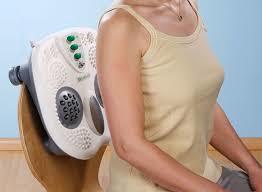
Physiotherapy treatment is to reduce pain and inflammation:
- Vibration exposure with vibratory massageis the main method of physiotherapy.
- Ultrasound therapy is also used, which allows to treat the manifestations of pain, has three factors that affect the body: thermal, physicochemical, mechanical.
- Darsonval Physiotherapyis performed by applying current to the skin with a vacuum electrode. Due to the effect of ionization with air, a weak electrical discharge occurs. With increasing voltage and secondary ionization of the air, a stronger discharge occurs.
Massage
Articular muscle asymmetry occurs when the blood vessels in the spinal cord constrict. Compression occurs in the area of the deformity, accompanied by spasms, pain and scars of muscle tissue.
Massage promotes:
- decrease in pressure in the vessels of the nerve roots;
- spasms disappear;
- vertebral function improves;
- blood circulation is normalized;
- slows tissue breakdown;
- prevents the development of the disease;
- Prevents muscle atrophy and restores tone.
Generally improves the well-being of patients, the symptoms disappear in the early stages with the use of massage in combination with other methods.
Magnetotherapy
Magnetic field therapy is used to prevent exacerbation of osteochondrosis. This treatment eliminates pain, normalizes blood circulation, relaxes muscles and improves the nutrition of intervertebral discs.
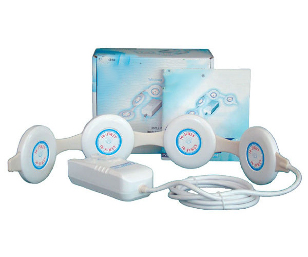
As with all stages of the disease, the procedure is applied with aggravation, using stationary devices, as well as portable devices when used at home.
Manual therapy and acupuncture
Manual therapy involves shaking your hands to restore mobility using a variety of methods:
- Manipulation Techniquesinvolves a dosed, slow stretching of the lumbar joints associated with versatile bending and rotation.
- Soft techniqueis aimed at relaxing to gradually reduce pain and relax the muscle corset.
The method of acupuncture therapy based on the study of biological zones and exposure to them with needles is noteworthy. Reduces the patient's need for anti-inflammatory and analgesic drugs.
Physiotherapy exercises
Sports procedures are necessary for osteochondrosis, but you should carefully choose physical exercises, taking into account all stages of the disease:
- Classes in vertebral simulatorspromote the treatment of spinal curvature, scoliosis, kyphosis, herniated discs and strengthening the muscle corset.
- Therapeutic exercises in the poollead to good results and are considered safe without injury. Complete muscle relaxation is achieved in 30-45 minute water treatments without much effort. These activities improve mood and sleep. Swimming is also recommended by experts to strengthen the back muscles.
- Walking with osteochondrosisis necessary in this regard, using the Scandinavian gait, which is considered effective by experts. Thanks to the poles, the load is evenly distributed in the shoulder girdle and arms, which reduces the pressure on the joints and spine.
:
It is contraindicated to engage in any sport such as.- Tennis.
- Disk throwing.
- High jumps.
- Frequent athletic activities.
The same contraindications for osteochondrosis apply in the following cases:
- Intervertebral hernia of the lumbar spine.
- is in the process of aggravation.
Swimming is possible with the permission of a doctor or under the supervision of an instructor.
Exercises
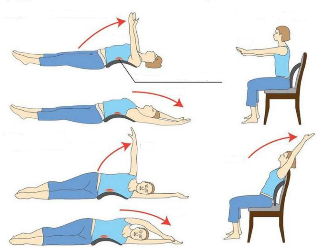
Problematic areas are stressed during medical gymnastics to prevent damage and normalize:
- You should lie down in a straight line,place one hand on your abdomen and the other on your chest. With a smooth breath, the stomach should rise first, then the chest, and breathe slowly. It should be repeated 4-3 times 10 times a day.
- Take a prone position, lift your headand hold your body in this position for 1-2 minutes after emphasizing with your hands in front of you. Then slowly hold the starting position, the exercise is repeated 3-4 times a day.
- Open the upper backWhile taking a deep breath, the back of the chair slowly bends backwards. Then bend forward while breathing, do this 4-5 times.
- For the back- Stand up, put your hands on your hips, and slowly bend forward and back and to the sides. Then slowly move the pelvis back and forth, repeating 10 times in each direction.
Yoga & Pilates
The use of yoga or Pilates involves the smoothness and accuracy of a movement that gradually flows into another. It is necessary to mentally control the condition of the muscle in each pose.
Deep breathing enhances soothing and calming effects like yoga:

- While breathing, raise your arms while standingand bend and touch your right foot while breathing. Repeat the same action, leaning to the left leg. In this position, keep your back straight, do it for 2 minutes.
- Sport Cobra- Lie on your palms, throw your head back and place it on your hands to get up while breathing. Keep your arms straight, breathing should be light, chest open, and in this position for 20 seconds.
- Turn your head left and right, Lie down for 10 seconds, then turn your head down, try to reach the neck with your chin, stand for a while, then turn your head back and lie down. Repeat the exercise for 5 minutes.
Orthopedic aids
Orthopedic devices for spinal correction are indicated for osteochondrosis:
- Orthopedic corsetis used to treat weakened muscles, does not restrict movement and protects the intervertebral discs from displacement, and at the same time serves to restore the spine. After the first application, there is relief due to fixation, spasms and pain are reduced.
- Pillow- reduces the load on the lumbar region by relaxing the pelvic organs. The orthopedic device reduces pain, maintains muscle tone and reduces vibration. There is another pillow device designed for the cervical spine during sleep.
Dr. Bubnovski
author's methodEveryone, regardless of profession and age, Dr. Bubnovsky can apply the method. After diagnosis, the doctor prescribes an individual treatment, taking into account the nature of the localization and pain.
According to this method, gymnastics is performed independently or under the supervision of a specialist in multifunctional simulators. This allows you to purposefully distribute the load to certain muscle groups while helping to relieve swelling, pain and spasm.
What can and cannot be done with osteochondrosis?
People with osteochondrosis use different treatments to prevent recurrence. In this case, you should give up the usual things when you can leave the heat in the bath.
The bath promotes good warming and stimulates physiological processes that reduce tension, swelling and pain. It is recommended not to exceed 10 minutes in a row in the steam room and to take a break at the same time.
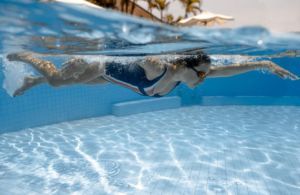
You can also use:
- Massage.
- Yoga.
- Swimming.
- Sports.
Not recommended for osteochondrosis:
- Lift weights.
- Overeating.
- Wear uncomfortable shoes.
Treatment with folk remedies at home
For the treatment of osteochondrosis at home, you can use alternative methods in combination with traditional treatment:
- Propolis- for this you need to spread it in the form of a thin cake, cut it to the required size to apply to the affected area. Correct this area and continue the procedure for 1-2 days with an interval of 12 hours until the pain completely disappears.
- Leeches- The essence of prevention is to reduce the pain caused by the flow of venous blood, which causes stagnation and inflammation. Leeches bite the skin from the affected area and hit Hirudini, which absorbs blood, has a healing effect and improves the course of biochemical processes.
- Mumio- used in diseases of the musculoskeletal system, has a stimulating, restorative and anti-inflammatory effect. 300 mg compresses are used for osteochondrosis. Dissolve the mummy in a glass of water, then compress.
- Mustard plasters- has healing warming properties. It has the property of dispersing blood by dilating blood vessels and increasing the flow of nutrients and oxygen. They also relieve pain and inflammation, improve the condition of the intervertebral discs.
Kuznetsov's applicatorhas a fairly simple structure, with spiked plastic plates attached to a solid base. Depending on the depth of the pain, the applicator has a different shape: a flat mat, roller or belt with a connector.
There are also accessories with spikes and magnetic elements. The size of the pins is between 2 and 5 mm, the intermediate length is between 2 and 8 mm.
Prevention of lumbar osteochondrosis
Neurologists with acute osteochondrosis recommend swimming only in pools, because there is a current in natural reservoirs that will increase the load on the spine. The water temperature should be 30 degrees, then you can lower it to 23, and depending on the disease, the style of swimming is chosen.

You should also follow proper sleep rules for prevention, including:
- choose the right mattress;
- flat base of medium hardness;
- orthopedic pillows;
- Proper diet that includes the use of foods containing vitamins C, PP, E, B3.
Seating rules - this requires a soft chair or stool, and body weight will not create pressure on the lower back. The body itself should be in the ischial tubercles, this is only possible in hard seats.
Hospital - with osteochondrosis of the lumbar region
Sick leave and duration depend on complications and the nature of the disease:
- Pain syndrome.
- The disease triggered inactivity.
- Working conditions and profession.
- Also from the treatment prescribed by a doctor.
- With radicular syndrome can be extended up to 3 weeks.
- If there is a complication, it is more than six months.
- Lumbar osteochondrosis - depends on the location, the severity of the pain syndrome and complications and lasts at least a week.
In severe cases, inpatient treatment is prescribed, after which the doctor recommends a change of profession.



































